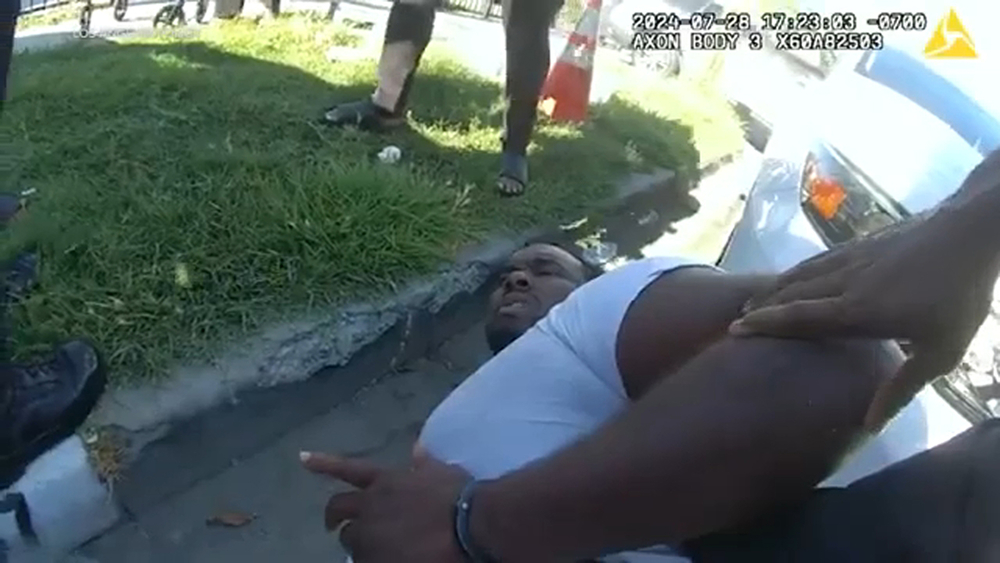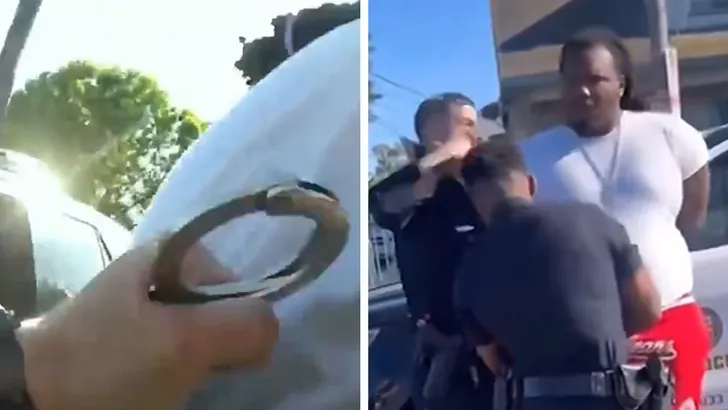Los Angeles police have released body camera footage of the moment an officer punched a man in the face during an arrest in the Watts area.
Los Angeles arrest video sparks public outrage, calls for investigation
The video, filmed by a bystander on a cell phone, has sparked criticism of the police and calls for disciplinary proceedings or even criminal charges against the officer.
The new footage, provided by the Los Angeles Police Department, is nearly an hour of footage from multiple body cameras, starting at the start of the interaction that resulted in the arrest. Alexander Mitchell, 28, was arrested for resisting and hindering arrest and later released with a misdemeanor summons.
On Tuesday, a lawyer representing the detainee said his client had not committed any illegal acts and “did not deserve to be treated this way.” The Los Angeles Police Protective League argues that the officer acted in accordance with department policies regarding the use of force when a person resists arrest.

New CCTV footage shows the incident began on July 28 at 5:16 p.m. when officers spotted a vehicle parked the wrong way and in the second row. They first knocked on the window and asked the driver to lower it, then demanded to see his driver’s license. In response to the driver’s question about the reason for his check and the opening of the door, the officers attempted to search him and handcuff him. During this interaction, the situation escalated as the driver began yelling at the officers and demanding that their superiors be called.
“What did I do? I didn’t do anything,” the detainee repeats repeatedly until he is pressed to the ground. A crowd gathers on the street, clearly expressing dissatisfaction with the actions of the police. One officer holds a Taser to keep the crowd at bay. Additional police arrive on the scene and a helicopter circles overhead as tensions rise in the crowd. The camera recording the event does not have an angle that would show the impact from the officer’s point of view, but it is obvious that it occurs around the moment when the detainee is being handcuffed and he continues to claim that he “did nothing” and demands to let him go.
An LAPD statement released Tuesday described the situation this way: “As he was being handcuffed, Mitchell began to actively resist, keeping his hands in his pocket and refusing to extend them. This prevented the officers from completing the procedure. As a result, the officer struck Mitchell on the right side of the face, allowing the handcuffing to be completed.” Mitchell was later strapped to a gurney and taken to the station in custody. The officer involved in the incident has been suspended from duty pending an investigation, which is standard department procedure.

How violation of standards during an arrest can affect a police officer’s career and public relations
Mistreatment of suspects during arrest can have serious consequences for police officers who violate rules and regulations. Depending on the law and standards of police practice, such actions may lead to the following consequences:
- Disciplinary action: Police officers who use excessive force or abuse may face disciplinary action within their organization. This may include warnings, reprimands, suspension or even termination if their actions violate department regulations and rules.
- Criminal prosecution: If mistreatment of a suspect is classified as a criminal offense, police officers may face criminal charges. This may include charges of assault, abuse of power, or other crimes. If found guilty, penalties can range from fines to imprisonment.
- Civil claims: Victims of abuse can file civil lawsuits against police officers and their department. This may lead to compensation payments for damages, moral damages and other losses. The department may also face reputational and financial consequences.
- Public condemnation: Abuse of suspects may cause public outrage and criticism. This could lead to protests, worsening police-community relations, and demands for reform and improved use of force practices.
- Regulatory changes: Incidents of abuse may lead to review and modification of existing regulations and procedures. This could include strengthening requirements for the use of body cameras, improving conflict management training and revising use of force standards.
These consequences serve as a reminder of the importance of upholding standards and respecting human rights in law enforcement practices.

